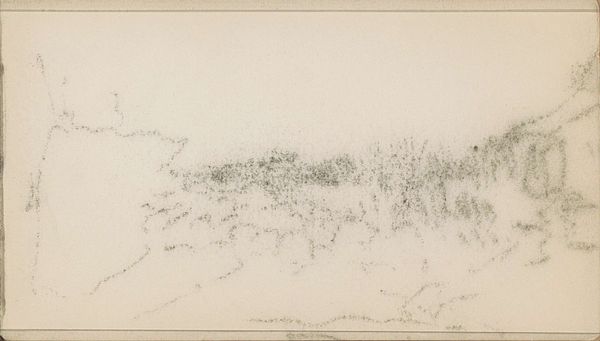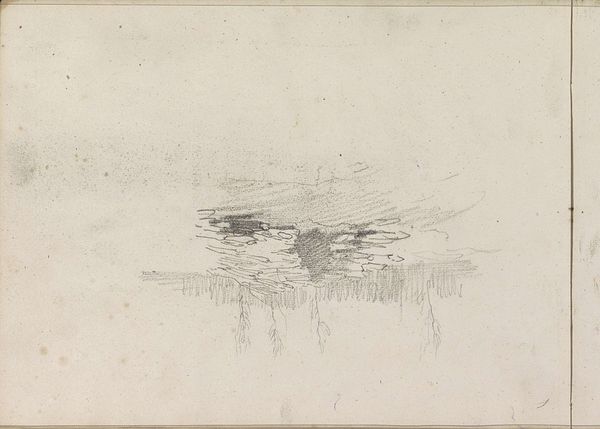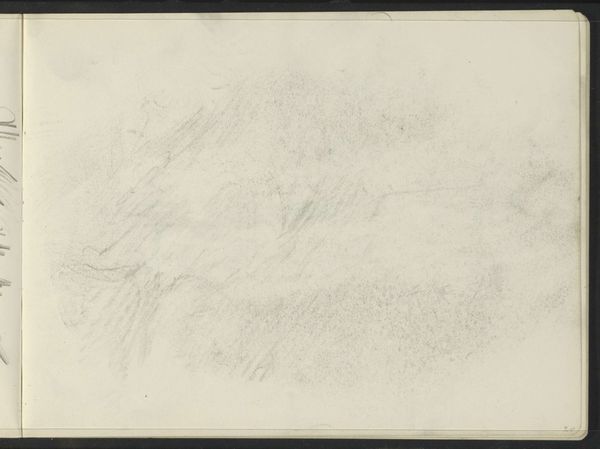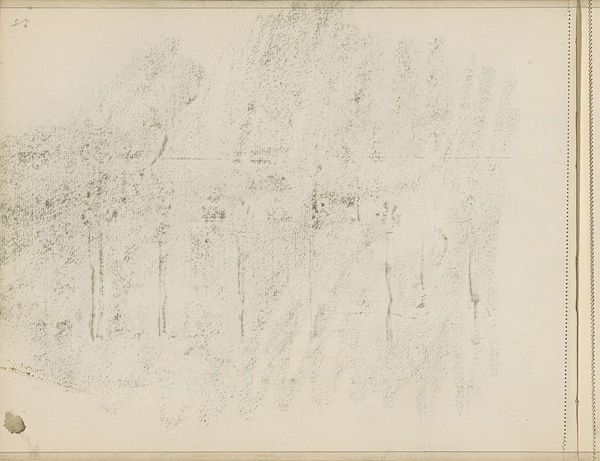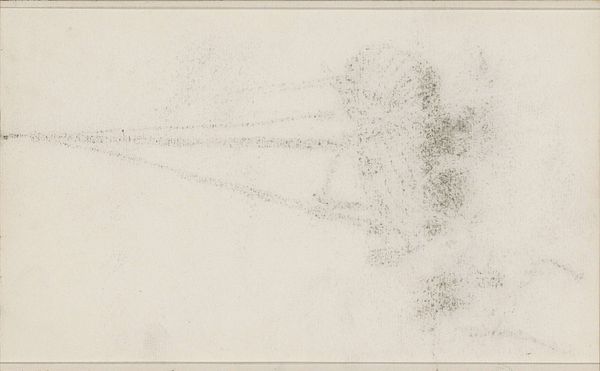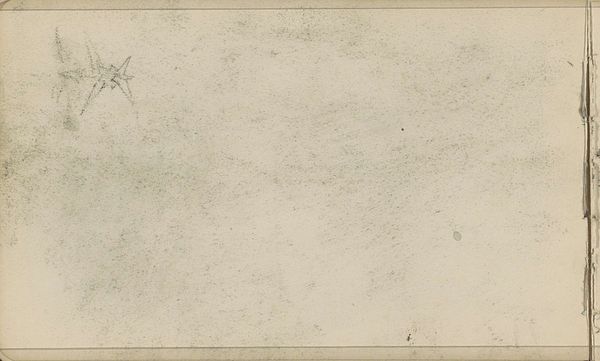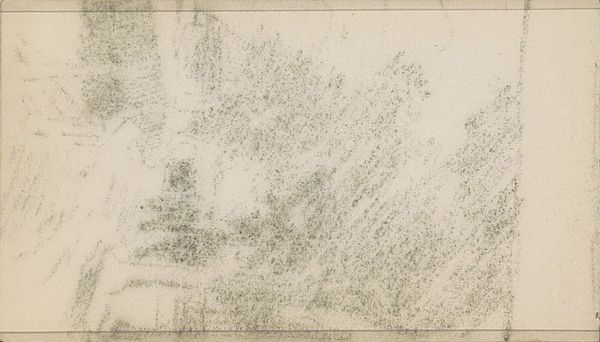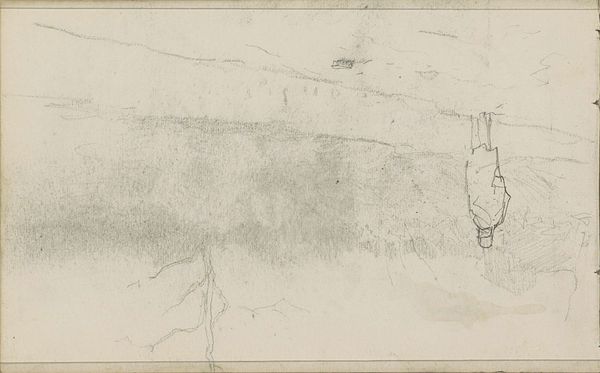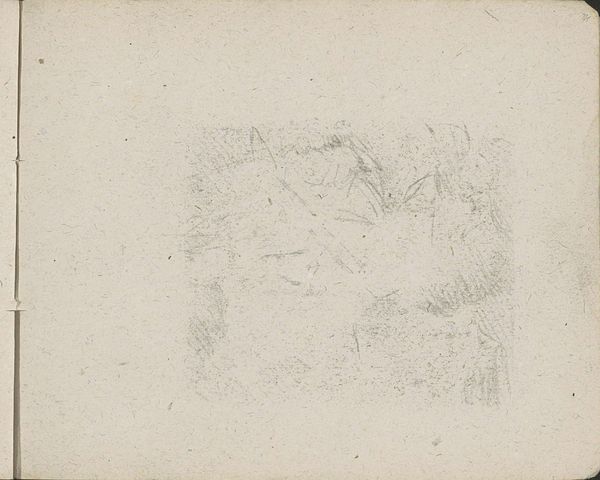
Copyright: Rijks Museum: Open Domain
Curator: Immediately, it evokes a sense of fleeting movement. A captured instant. Almost as if the subject, whatever it is, might disappear any second. Editor: We're looking at "Studie," a drawing by Julie de Graag, created around 1892. It’s currently held in the collection of the Rijksmuseum. De Graag employs pencil on paper in a way that feels both deliberate and ephemeral. Curator: Deliberately ephemeral? Now that's a juicy paradox! Because it is! Like a half-remembered dream sketched before it vanishes. And there’s a clear power dynamic here— the dense mass of heavy dark lines dominating one half and all that blank space on the left side fighting for space in our minds. Editor: The work appears deceptively simple. But when considering its date, contextually, women artists were often confined to specific genres, such as portraiture or still life. Pieces like this reveal how they subverted expectations, engaging in abstraction and form studies typically reserved for their male counterparts. It challenges patriarchal notions. Curator: Interesting! What if that’s it? Perhaps all of the nothingness speaks louder than what appears on the paper, itself, as the statement piece, the thing that actually grabs our attention. See, to me that negative space makes it feel unfinished, open for interpretation, or dare I say, protest. The question isn't necessarily "what *is* it?" but rather "what *could* it be?" What will it be transformed into if this form comes into fuller fruition? I love imagining what might appear, like the drawing is still being conceived. Editor: Absolutely, there’s a dialogue happening about female self-definition. That line becomes something to fight to take your place on. It embodies potential, it's not weighed down. The composition, divided as it is, also speaks to societal imbalances, pushing against rigid constraints. We can engage from feminist perspectives and look at how forms relate, overlap, push against each other. It’s incredibly powerful, almost confrontational despite its gentle medium. Curator: In all honesty, I walked in, and it kind of felt like a bad hair day kind of feeling to it - one of those weird little moods when nothing will come together properly. I had no idea all of that stuff could be right there, hiding. Thank you for shining light on the meaning there for me! I can appreciate it for that. Editor: Thank you for opening the drawing to see the space beyond the paper, too. It becomes a document with something very immediate to share from a place, now, beyond de Graag's time and space in history.
Comments
No comments
Be the first to comment and join the conversation on the ultimate creative platform.

